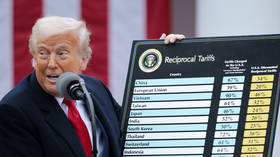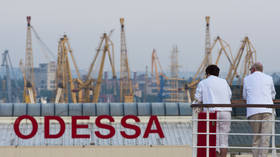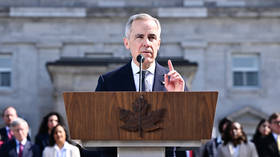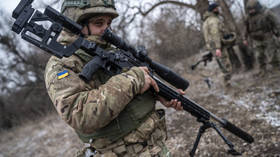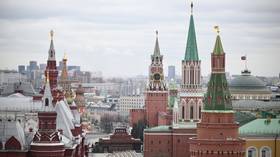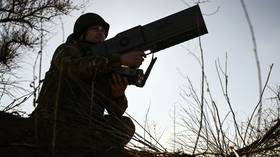Terrorism & cyberattacks on nuclear plants ‘not an imaginary risk’ – IAEA chief
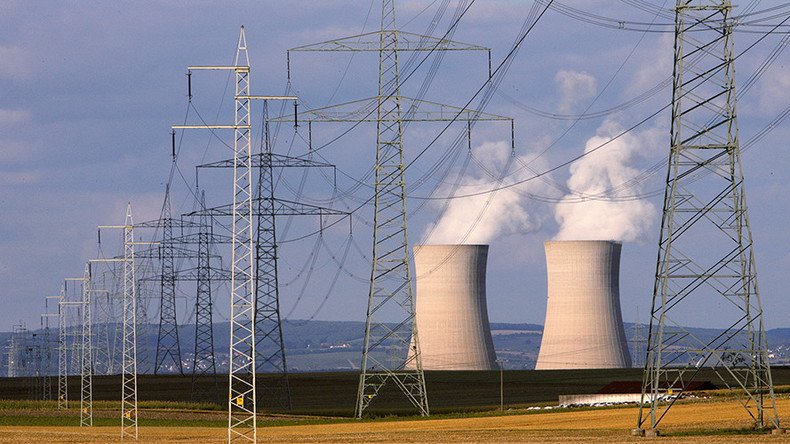
The risk of a terrorist attack against a nuclear power plant or militants eventually making a “dirty bomb” must be taken very seriously, the head of the UN’s atomic watchdog has warned, noting a growing threat of cyberattacks which have caused “disruptions” in the past.
In one of the most worrisome incidents which took place about four years ago, an individual tried to smuggle a small amount of highly enriched uranium to build a so-called “dirty bomb,” International Atomic Energy Agency (IAEA) Director Yukiya Amano revealed to Reuters without mentioning details or the location of the incident.
Speaking in Germany, Amano noted that terrorist groups, such as Islamic State (IS, formerly ISIS/ISIL), pose a serious threat to nuclear power stations.
#German nuclear plants are vulnerable to terrorist attacks – study https://t.co/YmbrX8ecrFpic.twitter.com/jrbFLsxhv1
— RT (@RT_com) March 24, 2016
Furthermore, cyberterrorism against nuclear power installations has become a real threat nowadays, Amano said, revealing that at least one cyberattack disrupted a nuclear power plant in the last three years.
“This is not an imaginary risk,” Amano told Reuters and a German newspaper. “This issue of cyberattacks on nuclear-related facilities or activities should be taken very seriously. We never know if we know everything or if it's the tip of the iceberg.”
Without providing any more details about the incident, Amano said the cyberattack had caused “some disruption” at the plant. The facility in question did not have to shut down its operations, but was forced to take “some precautionary measures.”
“This actually happened and it caused some problems,” he said.
This is not the first time that UN and world leaders have warned that terrorists might target nuclear facilities or aim to obtain radioactive material to make a “dirty bomb.”
The new nuclear threat dimension gained major traction after Belgian media reported that suicide bombers involved in the Brussels attack spree on March 22 originally planned to attack a nuclear installation. It was also reported that IS had been using a high-tech lab in Mosul for building bombs and chemical weapons and training recruits in bomb-making since its capture in 2014.
#Brussels terrorists planned nuclear plants attack, changed target https://t.co/jJpXUjUXI3pic.twitter.com/nzqizu0zUK
— RT (@RT_com) March 25, 2016
While the theft of nuclear material has occurred over the last two decades, the rise of international terrorism increases the chances of its deployment in a “dirty bomb.”
“The fact there has never been a major terrorist attack involving radioactive material does not mean it could not happen,” Amano warned earlier.
According to the IAEA Incident and Trafficking Database (ITDB) of nuclear material, from 1995-2015, a total of 2,889 incidents have been confirmed by the watchdog.
“Of these 2,889 confirmed incidents, 454 incidents involved unauthorized possession and related criminal activities, 762 incidents involved reported theft or loss and 1,622 incidents involved other unauthorized activities and events,” IAEA said.
#ISIS might be capable of creating ‘dirty bomb’ (Op-Edge) https://t.co/rTPP2TLhI5pic.twitter.com/X960FR7a3l
— RT (@RT_com) April 2, 2016
Incidents involving highly enriched uranium were registered on 13 occasions, plutonium on three, and plutonium-beryllium neutron sources on five occasions.
“A small number of these incidents involved seizures of kilogram quantities of potentially weapons-usable nuclear material, but the majority involved gram quantities. In some of these cases, there were indications that the seized material was a sample from a larger unsecured stockpile,” the watchdog noted.



